05 | Lizards

While a snake's body has only one long form, lizard's legs are made of multiple forms connected with joints.
Can't I just draw it from imagination?
You can't draw what you don't know.
You might say "I know what a lizard looks like!"
But how well do you know it?
Do you know the length of its tail relative to its body? Which of its toes are the longest? How far are the shoulders from the neck?
Simple themes like a ball or an apple can be drawn right away, but for more complex drawings, artists spend time looking up references and drawing them to remember that information for later use.
The more you manage to remember, the less you need to look at reference in the future when drawing a similar subject. Think of it as creating your own personal visual library.

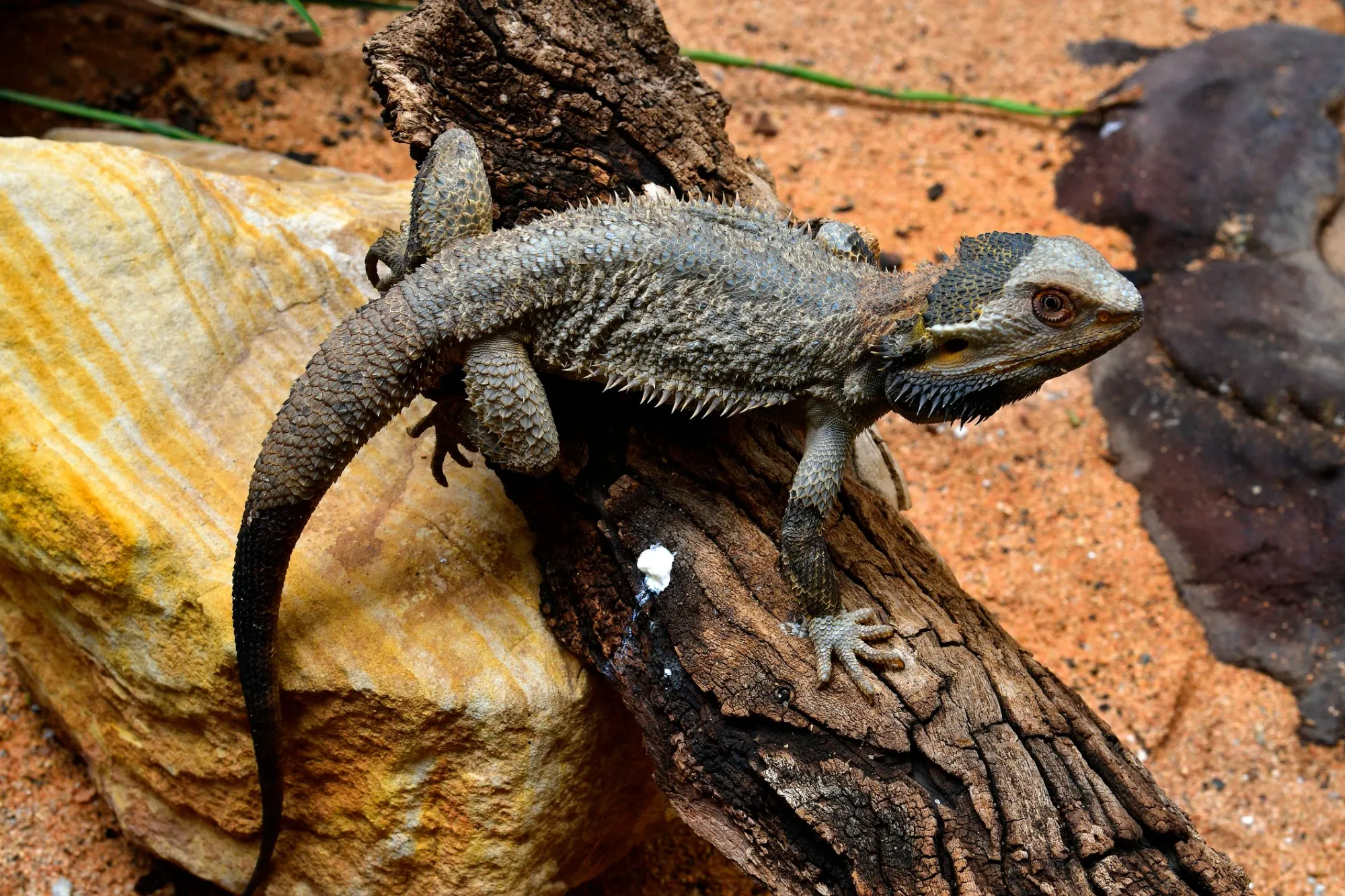
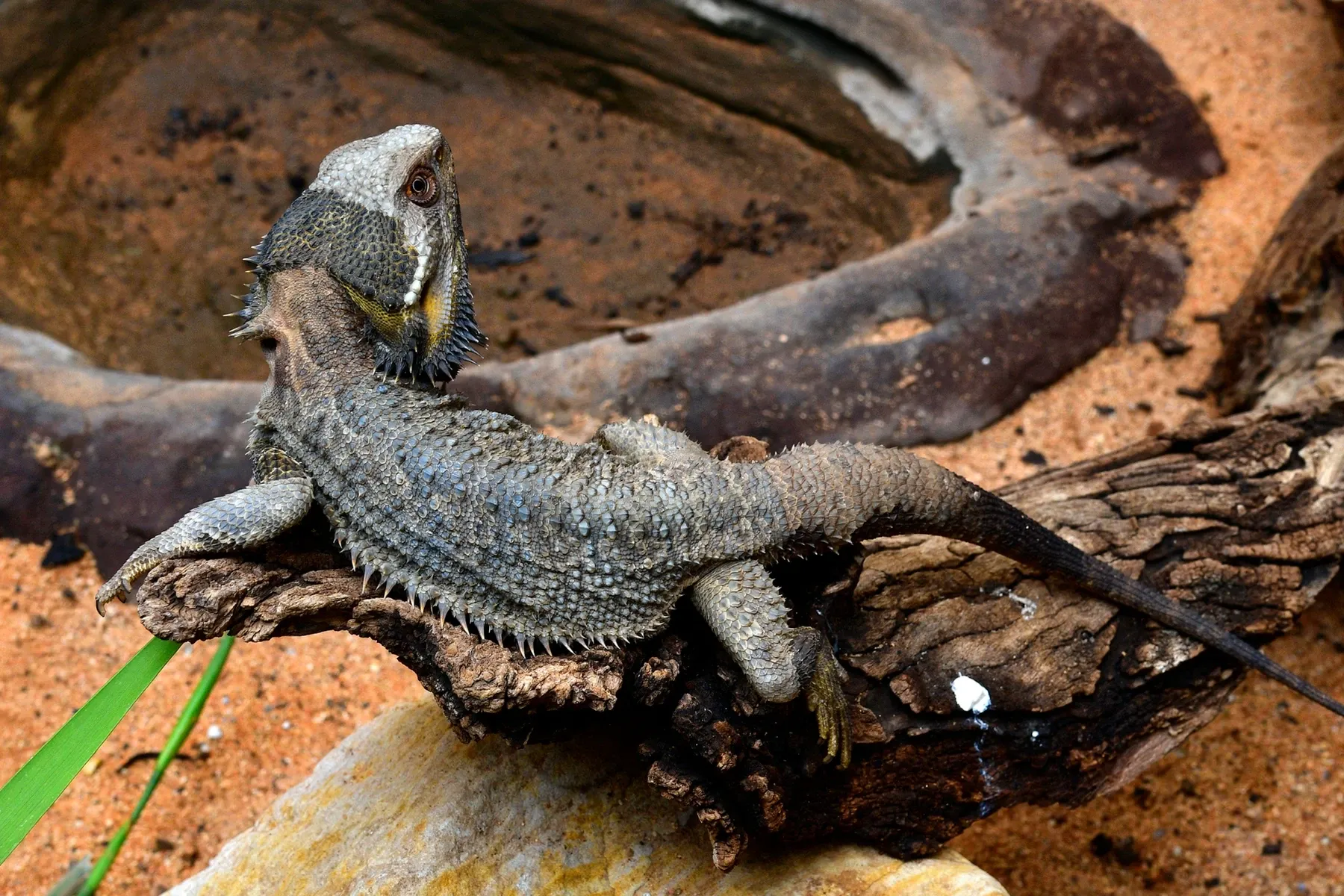

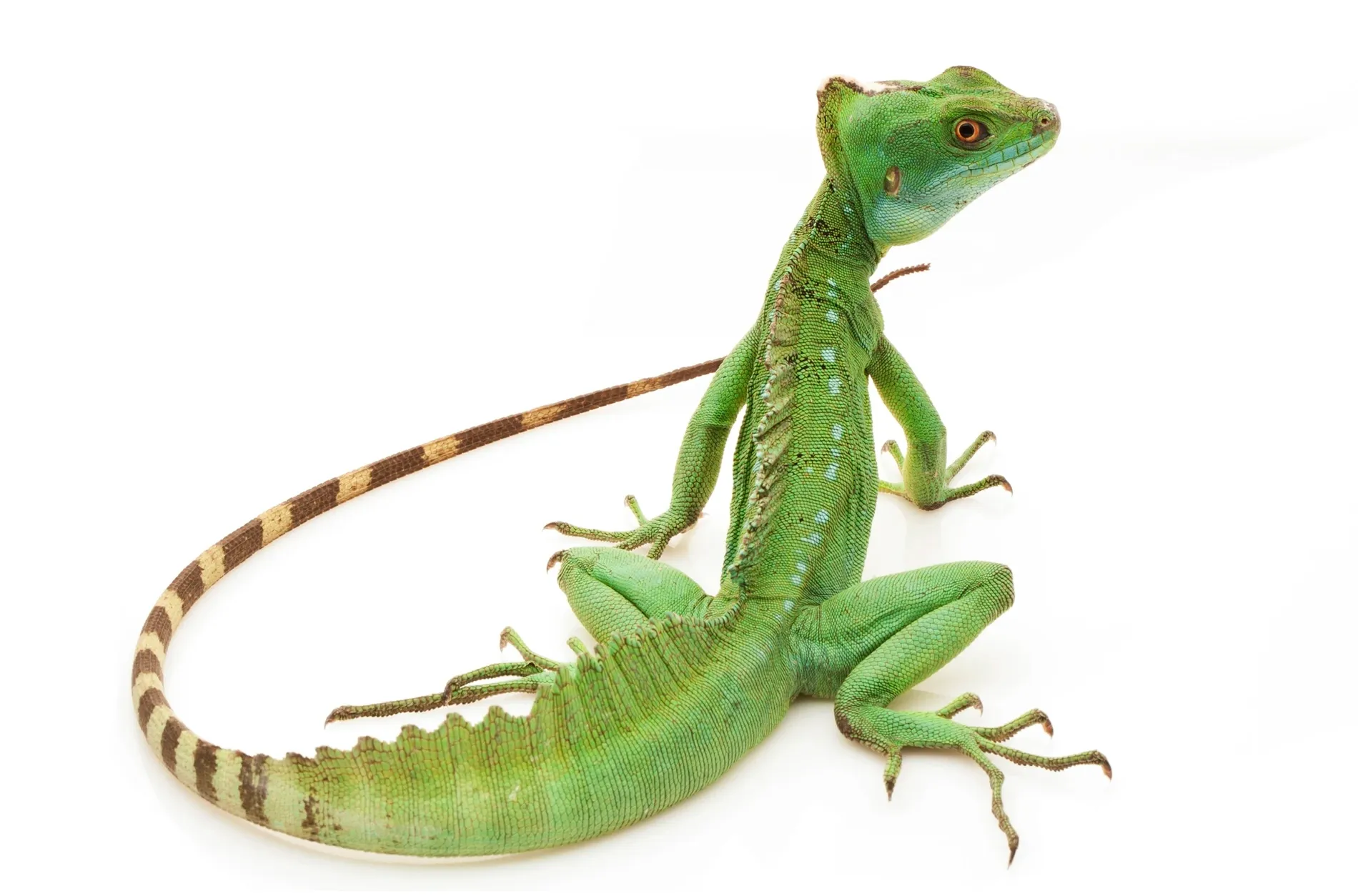
Step-by-Step
- Find the head and pull a line out of it representing the lizard's spine.
Note the little "dip" where the lizard's bottom will sit.
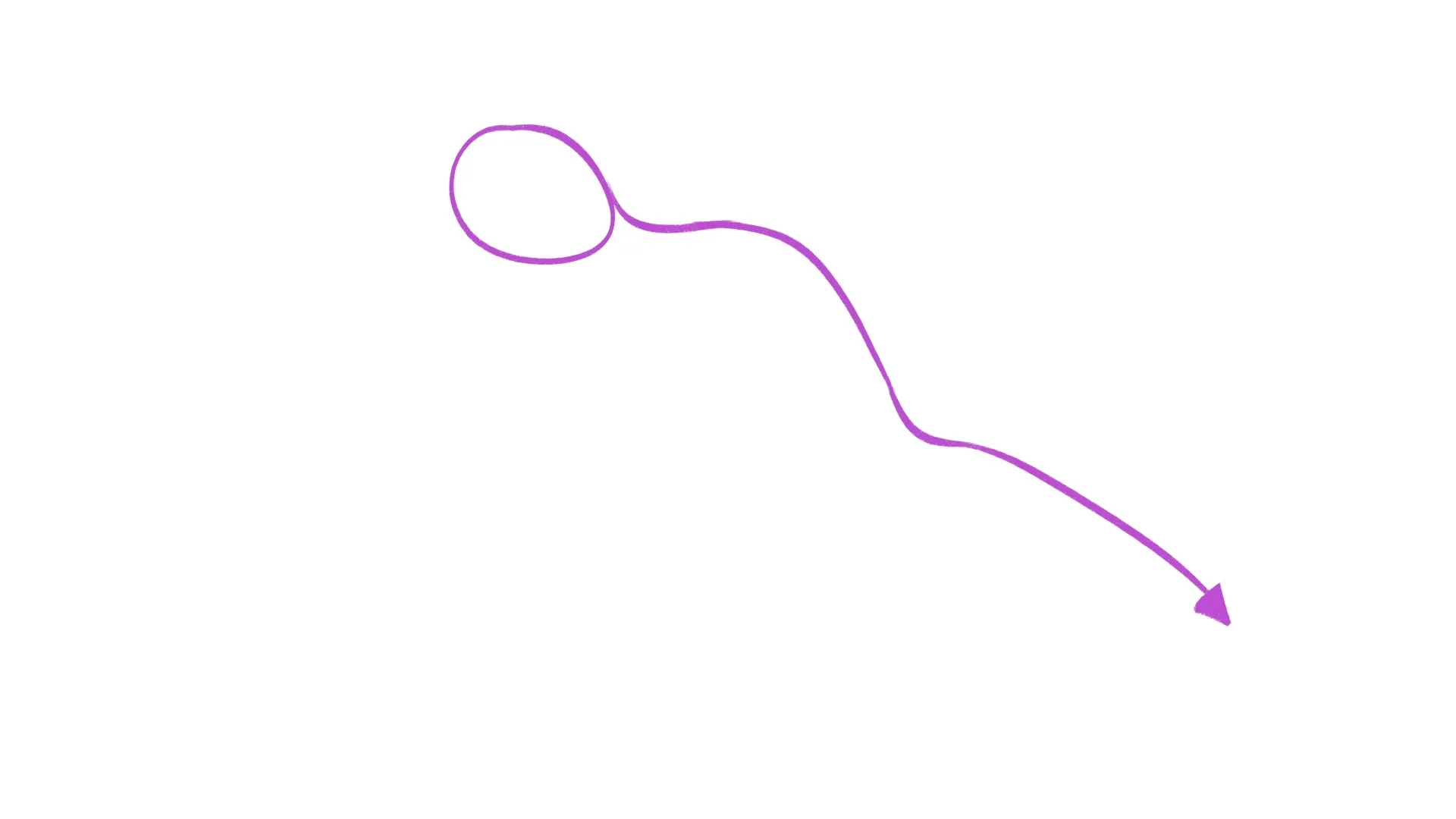
- Add the body and the butt as two round forms stuck to our line.
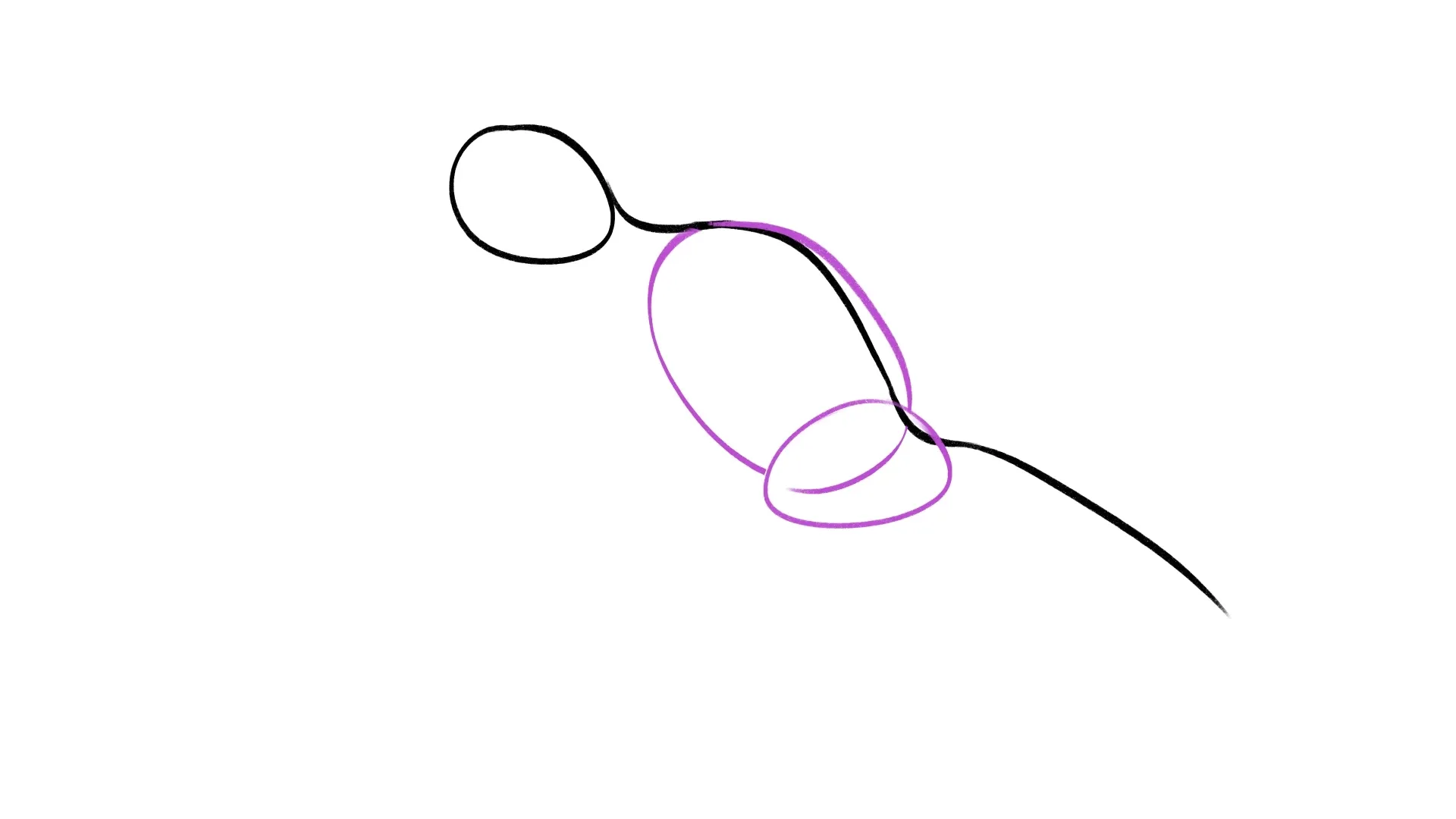
- Add more simple forms for the nose, tail's thickness and the legs.
Just like on your own body, the leg is segmented into upper leg, lower leg and foot.
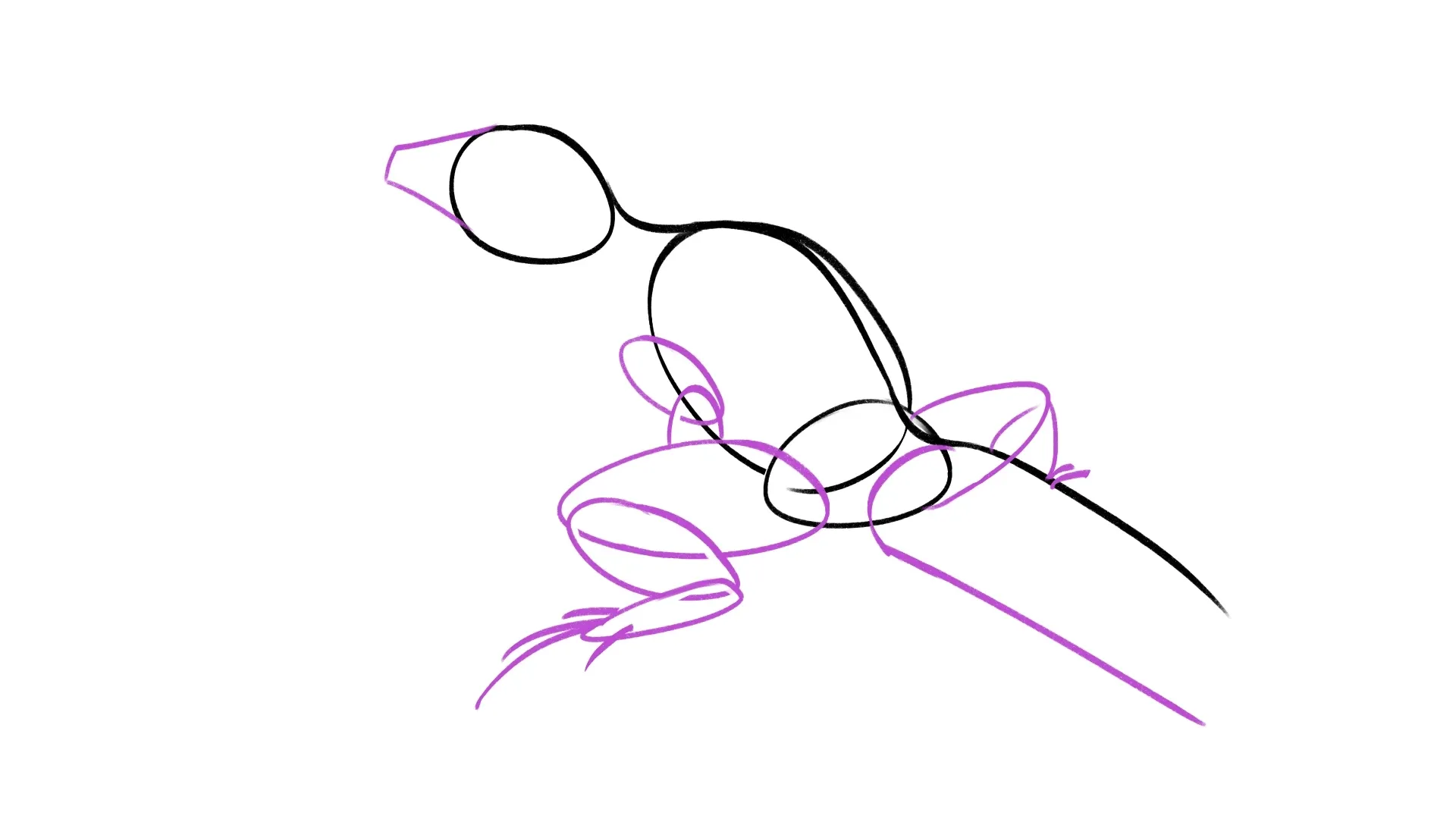
- Draw your linework over your sketch, using photo reference as a guide.
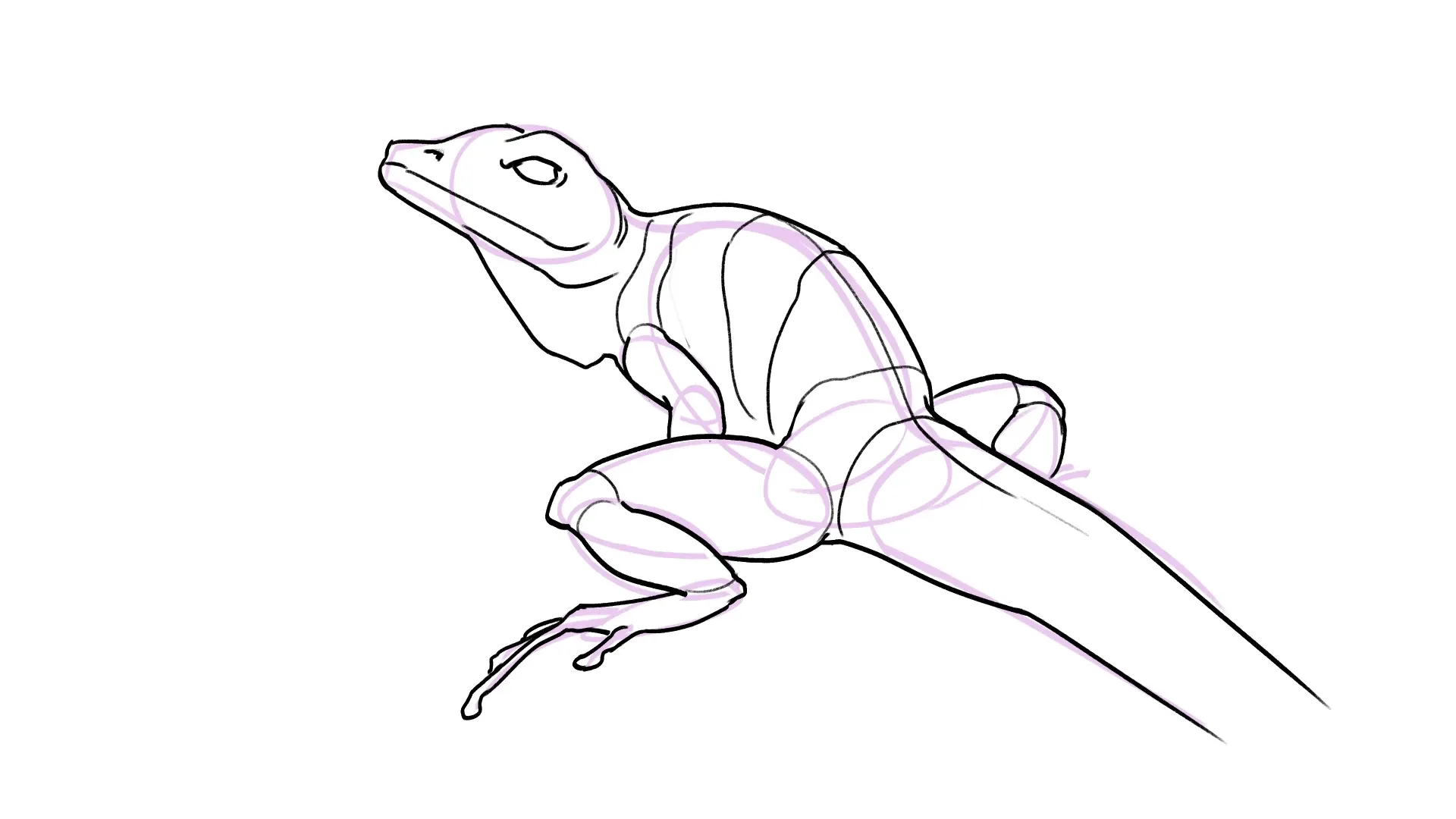
- Finish your lizard with texture and bolder lines around the areas of interest.
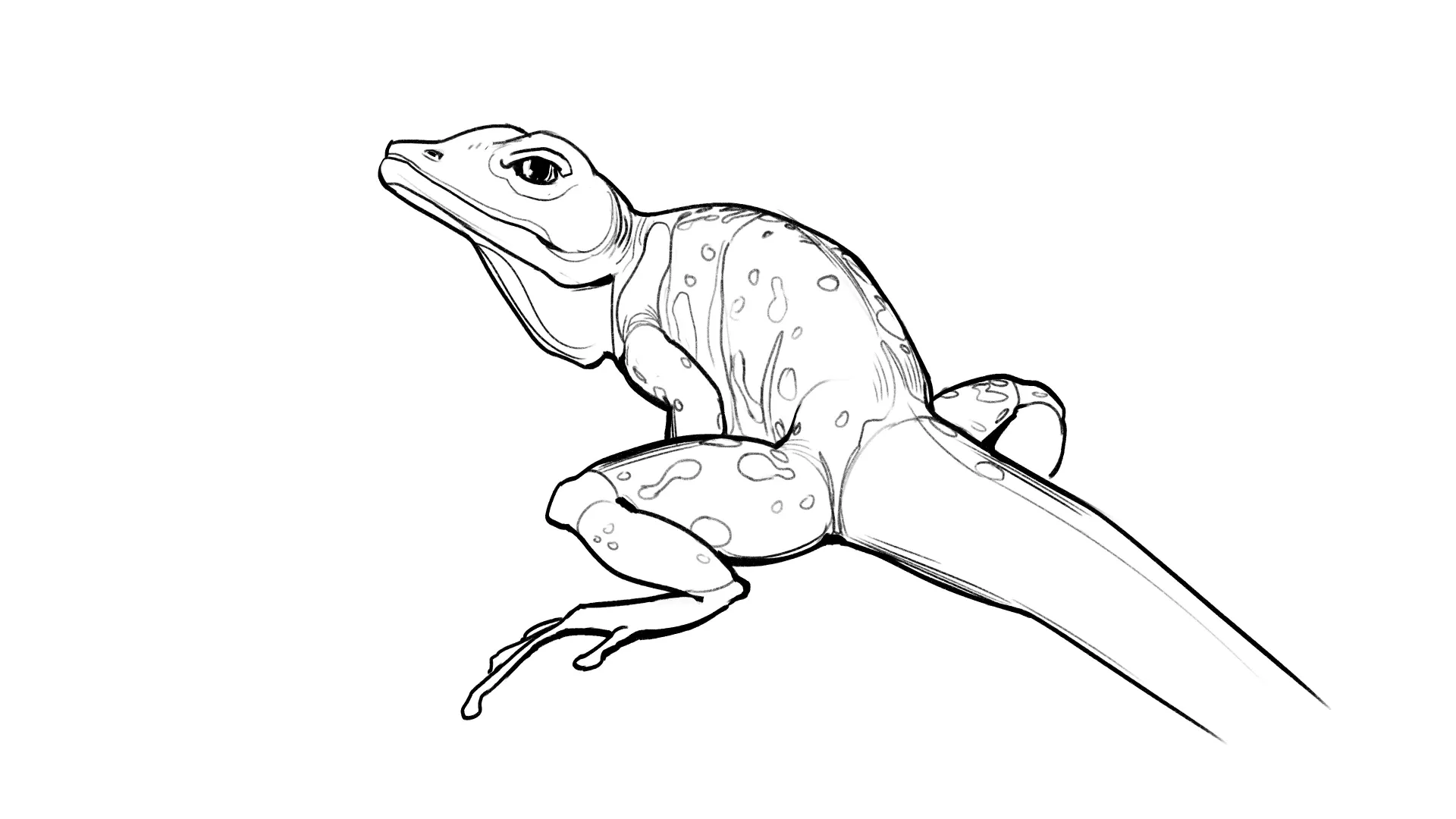
For example skin wrinkles can be drawn as light hatching.
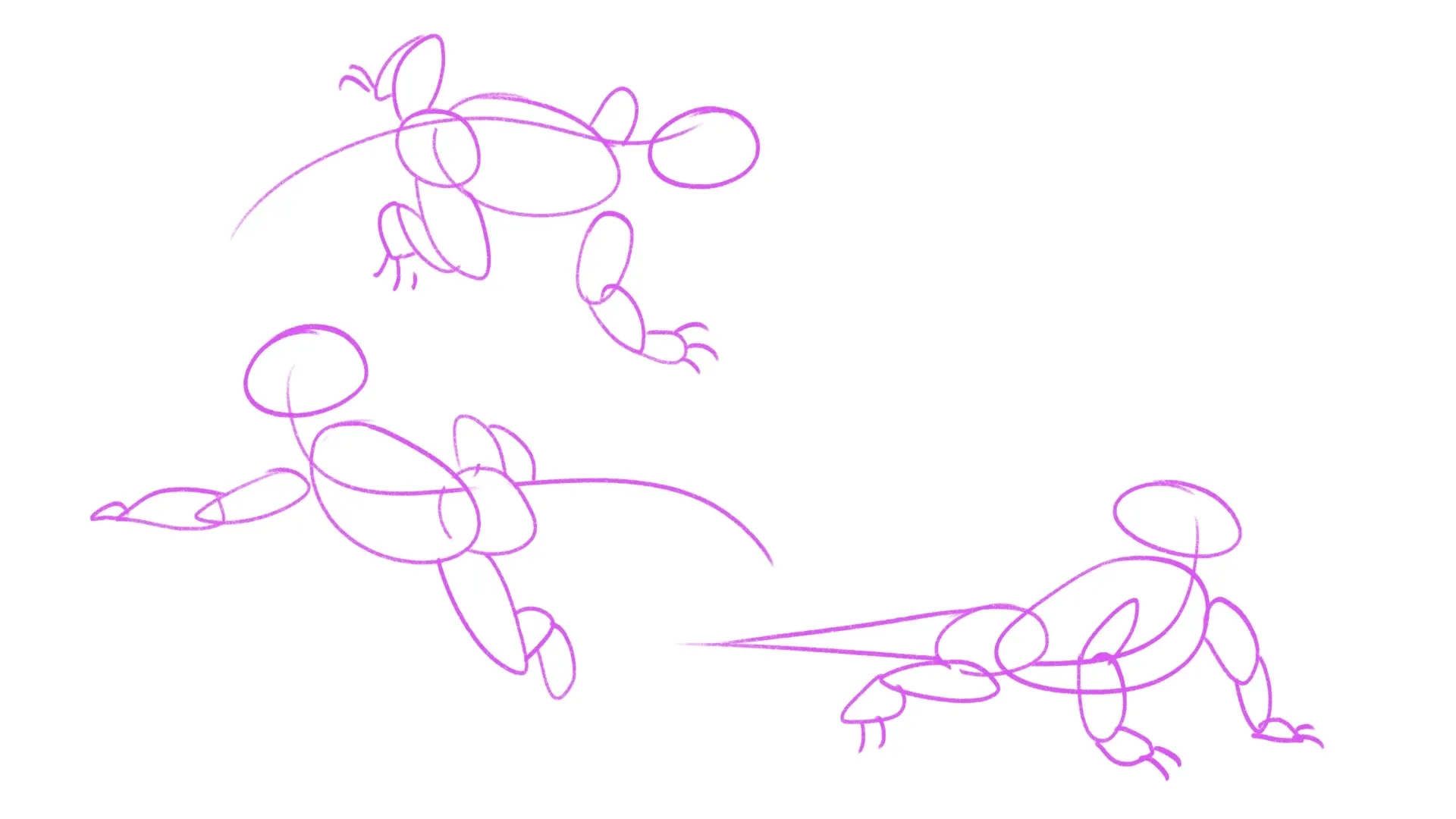
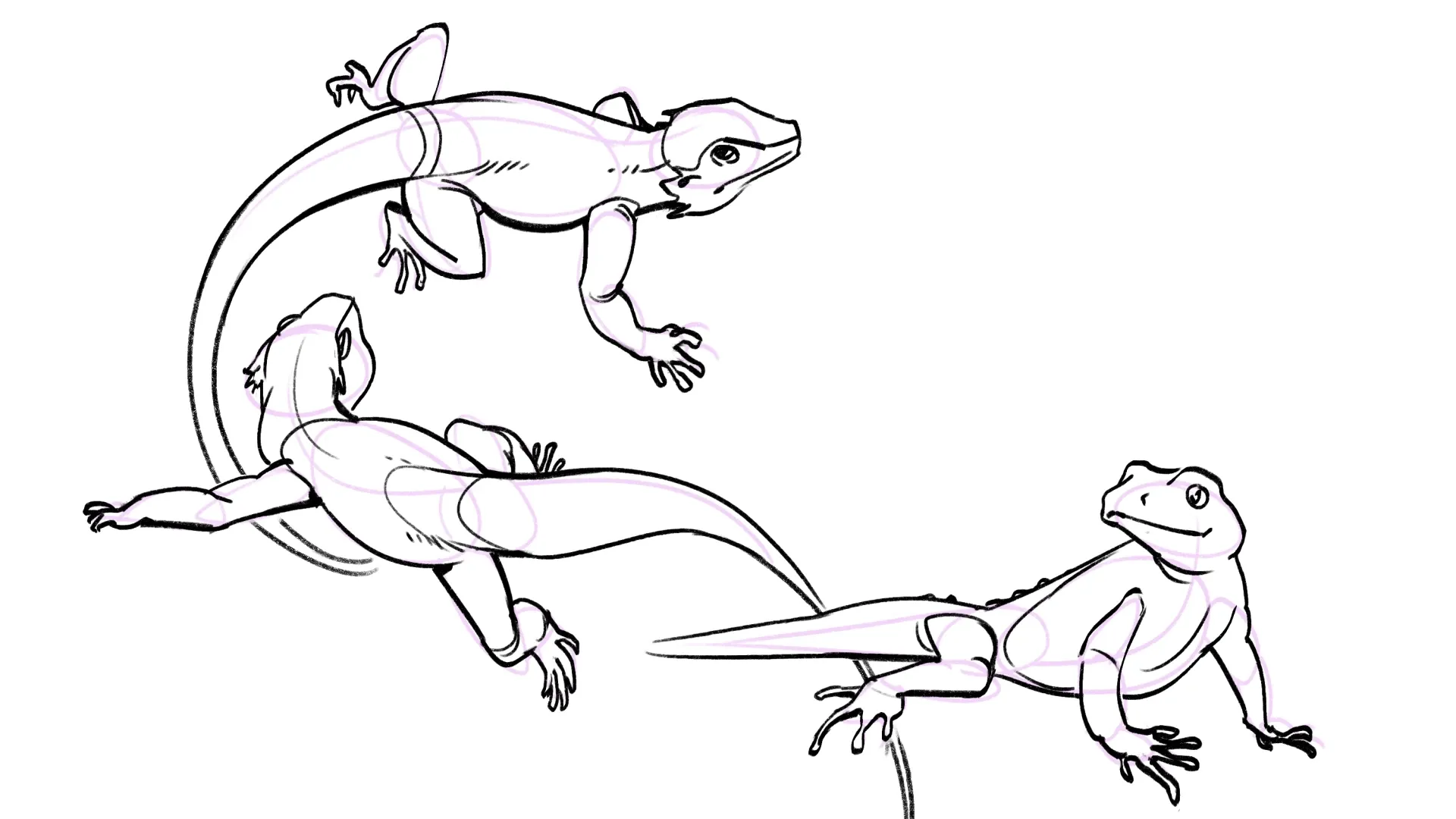
Combining forms
We've mostly been using simple round forms, but any form can be cut, molded or combined to create more complex forms.
For example on lizards you'll see interesting form combinations where the tail widens and joins the body.
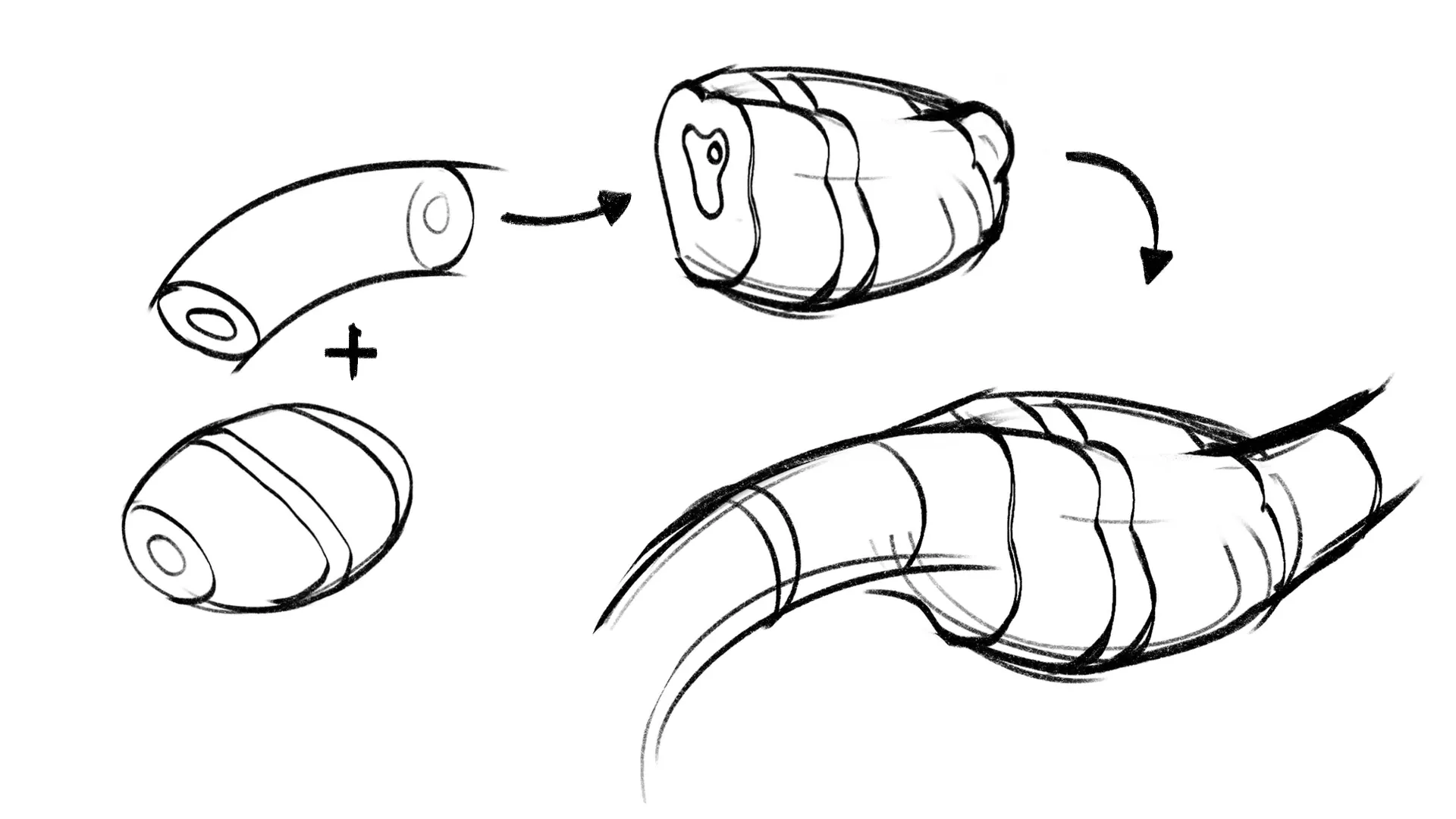
Summary
- References help draw complex subjects more convincingly.
- A strong visual library makes you less reliant on photo reference, which is the basis of drawing from imagination.
Assignment
- Draw 3 lizard sketches (3 x 15 minutes), pay attention to weight, thickness and overlaps.
- Draw one finished lizard piece (30 - 40 minutes) with texturing and a focal point.
- Share your studies in the Discord study group!
